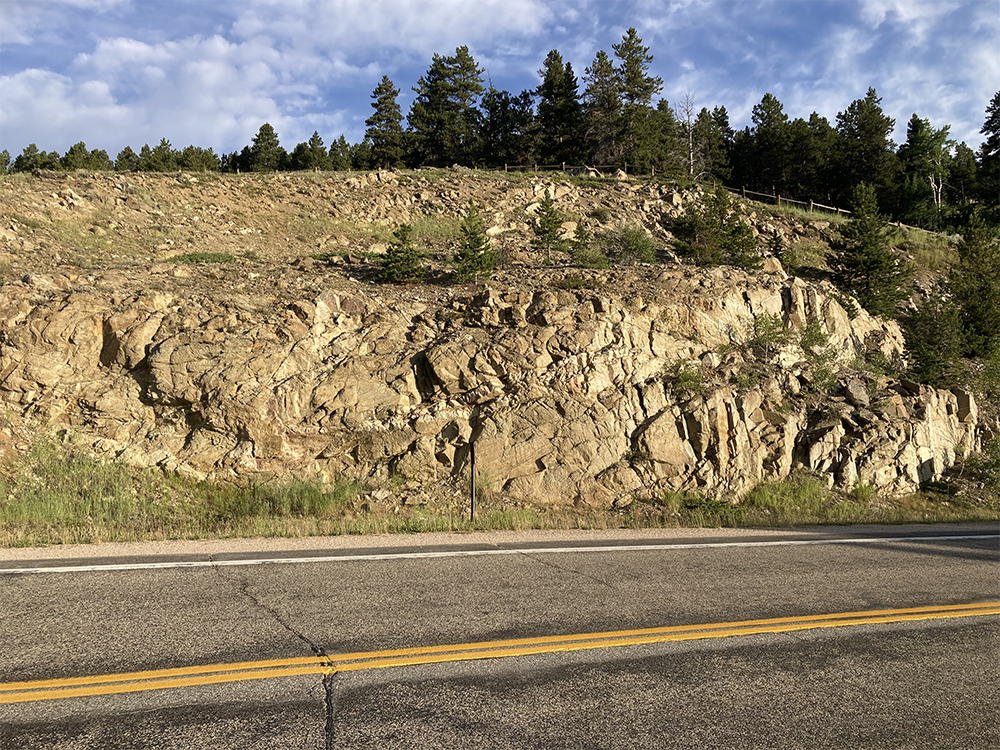Age of Rocks
Contact
University of Arkansas System Division of Agriculture
Cooperative Extension Service
2301 S. University Ave.
Little Rock, AR 72204

Age of Rocks
Driving into a boondock campsite in the Bighorn Range in eastern Wyoming a few weeks ago, I spied a roadside sign proclaiming a rocky bluff to be 3 billion years old. Aside from being a nice pile of gneiss – pardon the geology pun – I started wondering how exactly they know these rocks are so old while down the road a bit was another sign proclaiming a dolomite bluff to be fewer than 500 million years old.
Dating rocks has progressed greatly since the middle of the last century when the nature of radioactive decay became more thoroughly understood. Before that time scientists painstakingly went through strata of sedimentary rock – primarily limestone deposits – and compared and contrasted the fossils they found. Using this method – now known as biostratigraphy – they identified relative ages and the evolutionary sequence of events but could not put an exact age on the rocks they examined. The pre-Cambrian period – that big chunk of earth’s history – was identified as anything older than 541 million years ago before fossils could be found.
While the idea of using radioactive decay rates was first proposed at the turn of the 20th century, it was not until the 1940s with the invention of the mass spectrometer that dating rocks became commonplace. Basically, a small piece of the sample is turned into an ionized beam of its constituent parts which is passed through a strong magnetic field which separates the ionic stream into its constituent parts. The components are individually measured and from these data the age of the rock determined.
Most atoms exist in more than one state in nature and over time change from one form to another via the process of radioactive decay. The transition of these isotypes (technically called nuclides) is predictable and half-life measurements have been determined for most elements. Half-lives, the time required for half of the parent element to decay into a daughter element, ranges from 10 years for tritium, 5,714 years for carbon-14 to 100 billion years for samarium-147. By knowing the ratio of parent to daughter product and applying some mathematical wizardry, the absolute age of a rock can be determined.
Carbon-14 dating is probably most familiar amongst the public at large, but it has little value in dating rocks. Normal carbon, C-12, makes up the vast majority of all living tissue but there is a small amount of the unstable isotope C-14 found in all organic compounds. When an organism dies, it stops adding to its store of C-14 and what is there begins transforming back to the stable C-12 state. Because the decay rate is predictable, C-14 dating can be used to date samples up to about 50,000 years old, but after that, all the C-14 has returned to its normal state and the game is over.
For much older rocks, a number of radioactive isotypes are used. Probably the most common is the uranium-lead method. Uranium exists in two states, U-235 and U-238. These two isotopes decay to lead-207 and Pb-206 respectively. The half-life for the first form is 700 million years while the second has a half life of 4.5 billion years. A zircon crystal is often used as the sample from old rocks because it contains both parent uranium isotopes and gives a kind of internal check. If the calculated date using the two half-life estimates agree, then there is a high degree of confidence in the age of the rock.
Of course, there are cavoites to rock dating that must be considered. In the case of my 3-billion-year-old granite gneiss bluff, the rock is metamorphic in nature (changed by heat and pressure) from the original igneous rock. Radioactive dating relies on something called the “closure temperature,” the point at which the rock is cool enough that the normal process of radioactive decay can proceed. A single analysis of an isotope will give the age when the rock was metamorphed, not when the original granite was extruded from the bowels of the earth. By measuring several minerals, it is possible to tease out an evolutionary history of the metamorphosis event.
Sandstone rocks cannot be reliably dated by measuring radioactive decay rates because the components of the sedimentary rock may be of widely varying ages. Some individual grains of sand may be billions of years old and have been added to and weathered away from sedimentary formations several times over the long march of time. Sandstone rock ages are typically determined by the age of intervening strata of volcanic ash or limestone. Just a couple years ago the oldest Navajo sandstones in Utah were dated at about 200 million years of age based on a layer of limestone that could be radiometrically dated. Most of the sandstone bluffs along I-40 in western Arkansas are of Pennsylvanian age and in the neighborhood of 300 million years old.
